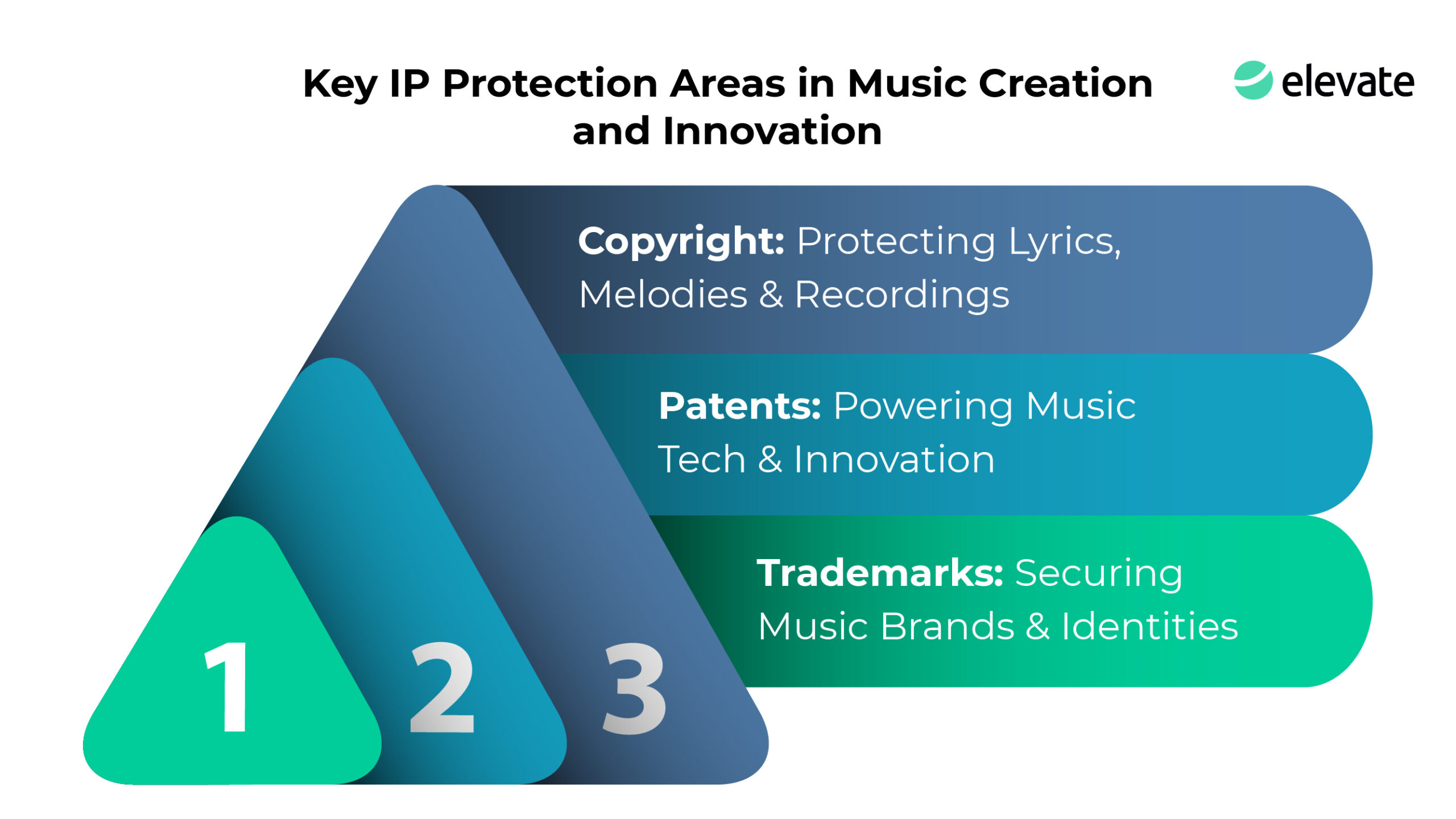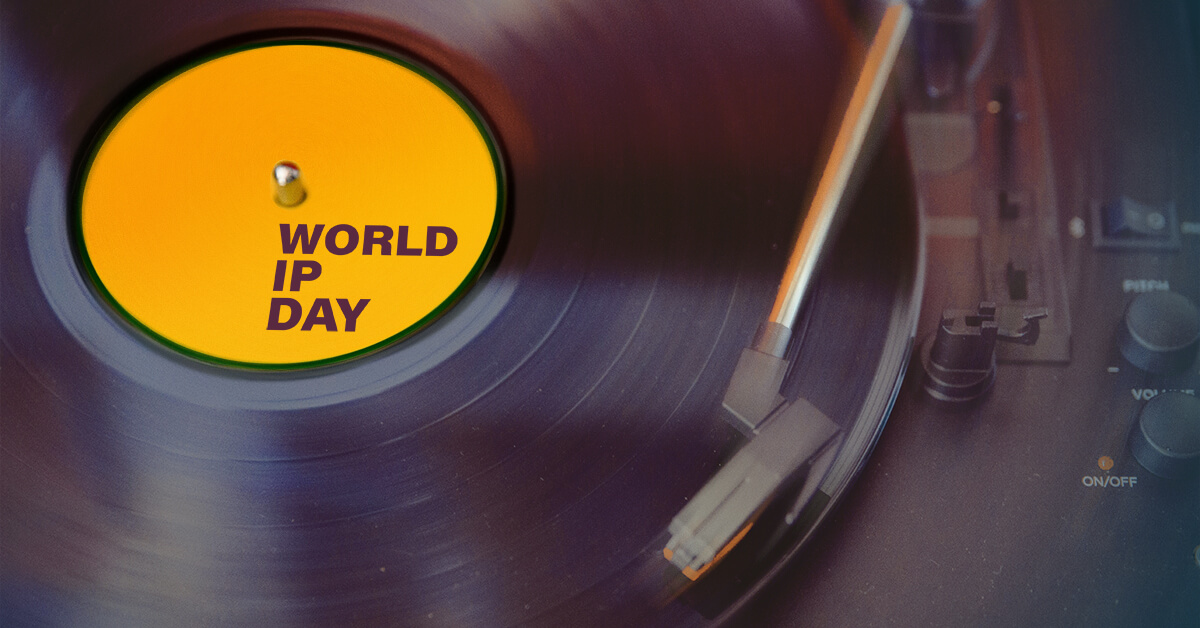Celebrating World IP Day 2025: Music, IP, and the Next Wave of Innovation
April 25, 2025
innovation artificial intelligence intellectual property
Each year on April 26, the world comes together to celebrate World Intellectual Property Day—a moment to reflect on how creativity, innovation, and intellectual property shape the way we live, work, and play. This year, the spotlight is on one of the most universal forms of human expression: music.
Whether it’s the hum of a lullaby, the beat drop in a club, or the cinematic swell of a soundtrack—music has the power to move us. But what often goes unnoticed is the vast system of ideas, innovations, and rights that make modern music possible.
This World IP Day, we dive into the evolving world of music and explore how intellectual property (IP) serves as both a backbone and a catalyst in this ever-changing landscape.
From Strings to Streams: How Music and Technology have Evolved
Music has always been intertwined with technology.
- Centuries ago, music was ephemeral—performed live, with no way to record or replicate; creativity was local, recognition was personal, and imitation was common
- Invention of musical notation brought the first form of IP-like protection—a standardized way to preserve and share compositions
- Phonograph in the late 1800s transformed music from performance to product, allowing it to be reproduced and sold; copyright laws expanded to meet the moment
- 20th century brought radio, vinyl records, cassettes, and CDs—each new format triggering shifts in how music was monetized and protected
Then came the digital age.
- MP3s, peer-to-peer sharing, and streaming platforms broke traditional models wide open; music became more accessible but also more vulnerable to unauthorized use
- In response, rights management systems, digital watermarks, and content ID tools were developed—blending legal protection with technical enforcement
And now, we’re in the era of intelligent sound.
- AI models can compose original music, replicating styles from Bach to Beyoncé
- Artists can produce radio-ready tracks from home using virtual instruments and digital audio workstations (DAWs)
- Music is becoming immersive and multisensory—delivered through spatial audio, interactive apps, and even haptic feedback that lets you feel the music
With each leap, new questions arise: Who owns the rights to an AI-composed song? Can a rhythm be patented? How do we balance access with attribution?
This is where IP plays a critical role—not just in protection, but in enabling innovation.
From Noise to Noteworthy: IP Protection Layers in Music
In today’s world, anyone with a smartphone can produce sound—but what transforms noise into music is intent, creativity, and originality. And that’s exactly what intellectual property (IP) is built to protect.
Music today isn’t just a melody. It’s a layered experience, shaped by artistry, innovation, and branding. Each of these layers is supported by a different form of IP:

Figure: Key IP Protection Areas in Music Creation and Innovation
- Copyright protects the artistic core—lyrics, melodies, recordings—ensuring that creators are recognized and rewarded
- Patents cover the innovations behind the scenes—AI-generated music tools, smart instruments, and immersive audio technologies
- Trademarks safeguard the identity of music brands, from streaming platforms to signature sound cues that define recognition and trust
IP protection isn’t just about guarding what’s already been made—it’s about enabling the next creation. It gives artists, inventors, and entrepreneurs the confidence to experiment, release, and scale.
In short, IP helps ensure that what starts as sound can become something noteworthy, shareable, and valuable.
Innovation Spotlight: Music Patents Leading the Next Era
Here’s a closer look at the emerging patent trends transforming the music industry:
- AI-Generated Compositions
Patents for AI-driven music systems are emerging, harnessing deep learning to compose original music. These systems can mimic the styles of specific artists, adapt to varying moods, and even generate music on command. This innovation is changing the landscape of music production, making it possible for anyone to generate personalized soundtracks or compositions based on a simple prompt.
A recent U.S. patent illustrates the practical potential of this innovation:
US12118976B1, titled ‘Computer-implemented method and computer system for configuring a pretrained text to music AI model and related methods’ describes a smart way to customize AI music generators. Instead of building a new AI system from scratch, it shows how to take an existing text-to-music AI and teach it to create music in specific styles.
Here’s the innovation in simple terms:
- Takes sample music that reflects the desired style (such as a specific artist or instrument)
- Creates custom tokens that capture what makes that style unique
- Identifies the key parts of the AI model responsible for generating style-specific music
- Fine-tunes only those parts, making the process faster and more efficient
What makes this approach valuable is its efficiency. By only updating select parts of the AI model (called “pivotal parameters” in the self-attention layer), the system can learn to generate music in new styles while keeping all its basic music-making abilities intact.
This is different from typical training methods that would change all the model’s settings. By being selective about what gets updated, the AI maintains its core understanding of music while adapting to create new styles.
The technology could be used to develop AI systems that can compose music mimicking specific artists, feature particular instruments, or work within defined genres – all without the extensive computing resources typically needed for full model training.
- Smart Instruments
Much like the evolution from smart appliances to fully integrated smart homes, musical instruments are becoming smarter, thanks to advanced technology and innovative patents. Imagine a guitar that learns your playing style or a piano that adapts its dynamics based on how hard you press the keys. Just as smart homes adjust lighting, heating, and security systems based on your preferences, these “smart” instruments adjust in real-time to enhance the musician’s experience.
Embedded sensors and adaptive learning algorithms are driving this transformation, providing musicians with real-time feedback and an intuitive way to interact with their instruments. These technological advancements open up new creative possibilities, enabling musicians to push boundaries during composition and performance.
Let’s explore a recent U.S. patent that showcases this exciting leap forward:
US12205567B1, titled ‘Arpeggiator musical instrument’, introduces a musical instrument featuring an integrated arpeggiator, which allows musicians to automatically generate arpeggiated patterns based on the notes they play. The instrument offers a variety of customizable arpeggio patterns, with a built-in controller to adjust parameters like tempo, rhythm, and note order in real-time. Additionally, it includes an X-Y pad that detects the user’s hand gestures, enabling intuitive control over the arpeggiation pattern. By moving their hand over the pad, the user can manipulate one or more parameters, such as the rhythm or sequence, to dynamically shape the music. This combination of features provides musicians with a versatile, expressive tool for both composition and live performance, blending traditional music-making with modern technological advancements.
- Haptic Sound Technologies
Haptic sound is transforming the way we engage with music. Patents in this space cover innovations such as wearables that pulse with bass or gaming chairs that let you feel the music in-game. These technologies create a multisensory experience, where music isn’t just heard—it’s felt. As a result, music enthusiasts and performers can now experience sound in a whole new dimension, amplifying the emotional and physical connection to music.
Final Note
Music is more than just sound—it’s an emotion that speaks to the heart, an identity that resonates across cultures, a blend of science and art, and a driving force of commerce and connection. It’s a shared experience shaped by an intricate network of ideas, innovations, and the protections that preserve them.
On this World IP Day, we celebrate the ingenuity that fuels the music we love. Intellectual property is not just a legal safeguard—it’s the foundation that allows creativity to thrive. From the instruments that shape the sound to the algorithms that bring new compositions to life, IP plays a critical role in ensuring that artists, inventors, and creators continue to innovate and share their work with the world.
We owe much of the music of today—and the innovations of tomorrow—to the global IP systems that adapt and protect in an ever-evolving creative landscape. As we listen to the melodies that move us, let’s also recognize the silent partners—those who shape, protect, and guide the journey of music through patents, copyrights, trademarks, and more.
Here’s to the creators, engineers, researchers, and rights organizations whose efforts continue to push the boundaries of music and technology. This World IP Day, let’s not just listen to the music—let’s appreciate the invisible force that makes it all possible. Because behind every note, every rhythm, and every melody, there’s a deeper story waiting to be heard.
Back to Expertise



